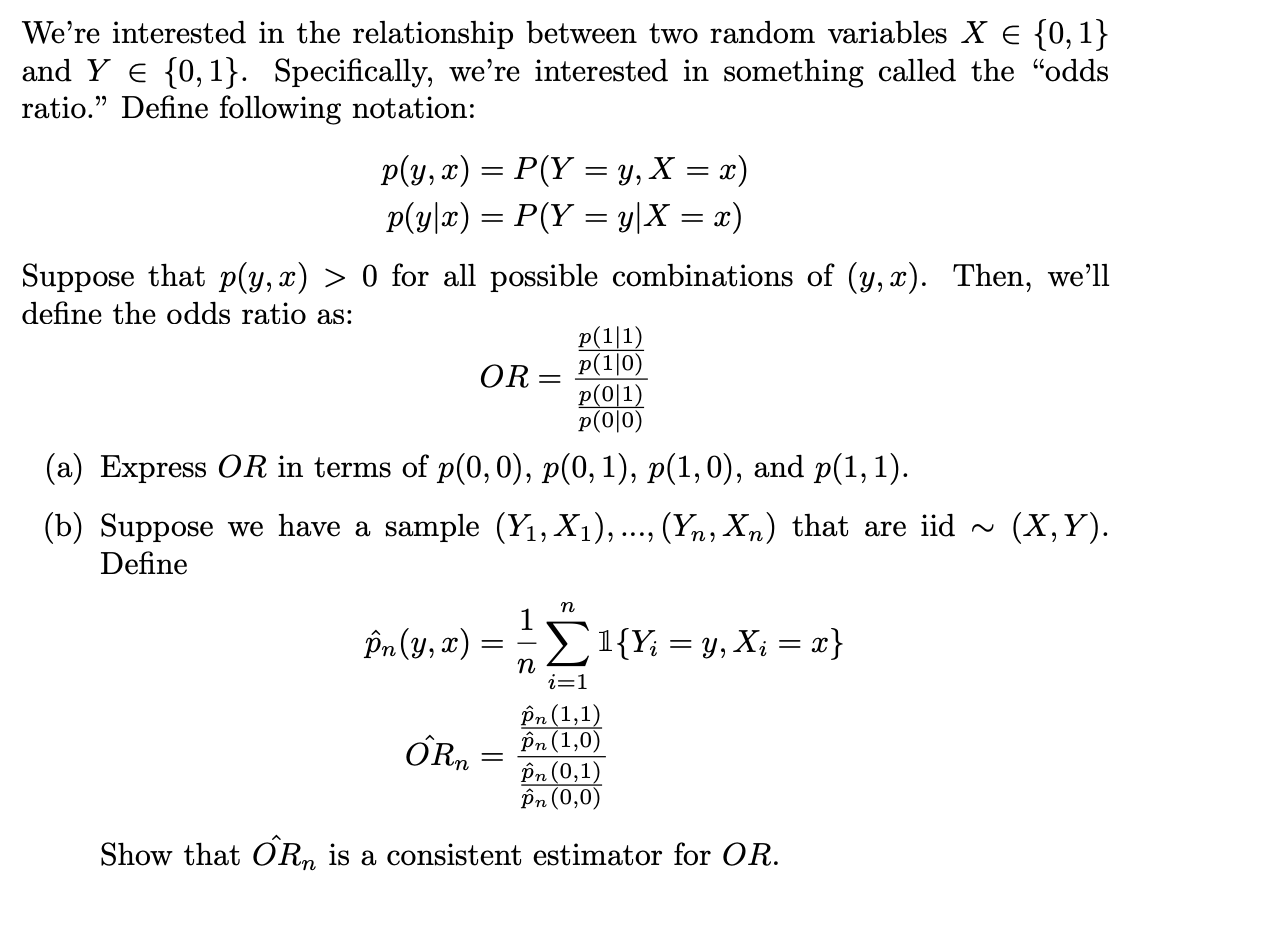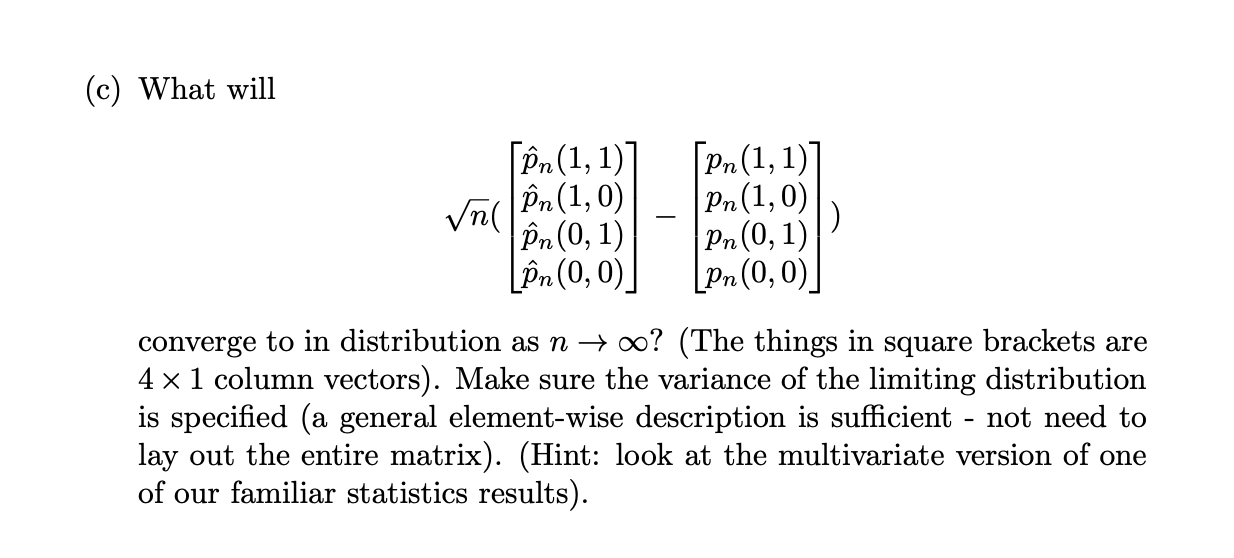Answered step by step
Verified Expert Solution
Question
1 Approved Answer
We're interested in the relationship between two random variables X{0,1} and Y{0,1}. Specifically, we're interested in something called the odds ratio. Define following notation: p(y,x)=P(Y=y,X=x)p(yx)=P(Y=yX=x)


Step by Step Solution
There are 3 Steps involved in it
Step: 1

Get Instant Access to Expert-Tailored Solutions
See step-by-step solutions with expert insights and AI powered tools for academic success
Step: 2

Step: 3

Ace Your Homework with AI
Get the answers you need in no time with our AI-driven, step-by-step assistance
Get Started


